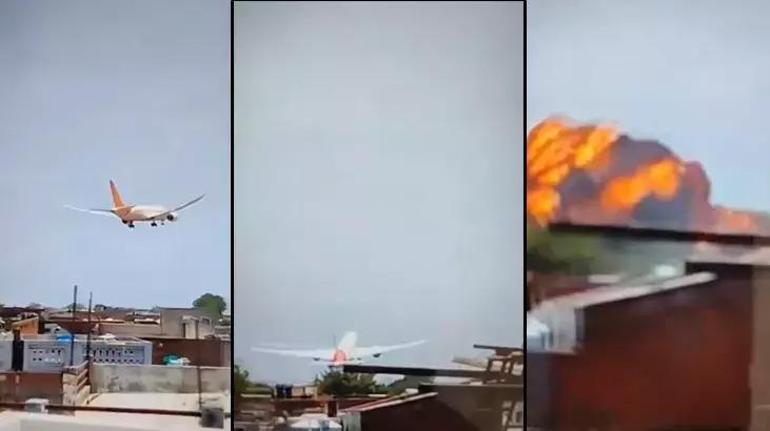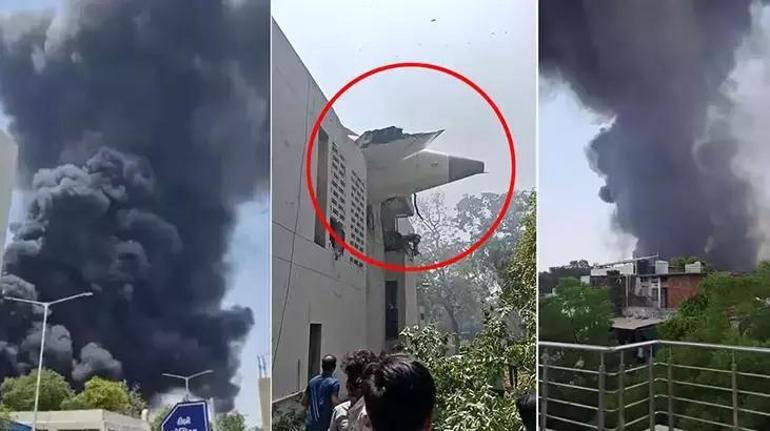BREAKING NEWS: HORRIFYING DETAIL IN INDIA PLANE Crash: DID THE PILOT CRASH ON PURPOSE?

The emergence of cockpit recordings related to Air India flight 171, which crashed on June 12, killing 241 people on board and 19 on the ground, has brought a very serious allegation to the forefront for the first time.
Relatives of the victims eagerly awaited the preliminary report, which was released on Saturday morning India time.
Just seconds after the crash, the 12-year-old Boeing 787 Dreamliner's two fuel control switches suddenly snapped to the "cut-off" position , cutting off fuel flow to the engines and causing a power loss, essentially shutting down the aircraft's engines.
'WHY DID YOU STOP?'
Normally these switches are only turned off when the aircraft is on the ground.
- In the cockpit audio recording, one pilot asks the other why he "shut down the engines," while the other insists he didn't. However, the recording doesn't clarify who said which sentence. According to the BBC, the co-pilot was flying the plane during takeoff, while the captain was monitoring.
The horrific details were commented in the news of NDTV, one of India's leading TV channels.
The switches were returned to the normal flight position after a few seconds, which activated the automatic engine restart mechanism. At the time of the accident, one engine had begun to regain thrust, while the other had restarted but was not yet producing full power.
It only stayed in the air for 1 minute
Air India Flight 171 remained airborne for just one minute before crashing into a crowded neighbourhood in the western city of Ahmedabad, an incident that has become one of India's most mysterious air crashes.

Investigators are examining wreckage and cockpit recordings to try to figure out what went wrong immediately after takeoff. According to FlightRadar24, the plane reached an altitude of 625 feet in clear weather, but its location data was lost about 50 seconds after takeoff.
The preliminary report of the investigation, prepared by Indian authorities in conjunction with Boeing, General Electric, Air India, Indian regulators and experts from the US and UK, raises many questions.
'Could it have been a suicide attempt?'
Captain Mohan Ranganathan, one of India's leading aviation safety experts, suggested that the plane may have been deliberately crashed, citing the unusual use of fuel cut-off switches and cockpit voice recordings. This, according to NDTV, "raised the possibility that the crash was a pilot-involved suicide ."
When asked by NDTV, "Could one of the pilots have deliberately cut off fuel to the engines?", Ranganathan gave this clear answer:
Absolutely. This has to be done manually. Fuel cut-off cannot be automatic or triggered by a power outage. The switches are not sliders. They are located in a specific slot and must be pulled or turned to move them up or down. This means they cannot be accidentally switched to the 'off' position. This is deliberate interference.
'I HEARD HE HAD HEALTH PROBLEMS'
According to the AAIB report, the fuel control switches for both engines were turned from "run" to "cut-off" almost simultaneously. These switches are located on the cockpit's center panel and are surrounded by protective frames that prevent them from being accidentally moved. They are also non-touch and cannot be activated by turbulence, power outages, or software malfunctions.
Ranganathan also made an important claim about the captain:
"I heard the captain had some health problems. During takeoff, just as the plane was pitching its nose up, one of these switches was turned off after the other. This must have been intentional. In the cockpit voice recording, one pilot asks, 'Why did you do it?' and the other says, 'I didn't do it.' But there's an inconsistency between these statements, as if there was an attempt to cover it up."

"All pilots are required to wear headsets during takeoff. It can be determined on the recorder (CAM1 - captain, CAM2 - co-pilot) whether the voice belongs to the captain or the first officer. But the report contains vague phrases like 'one said this, the other said that'. This is very poor reporting."
According to cockpit procedures, the co-pilot was Clive Kunder and the captain was acting as the monitor pilot.
Ranganathan emphasized the importance of this situation:
"During takeoff, the pilot flying the aircraft had both hands on the steering wheel. The autopilot was not active at that moment, and the pilot was busy lifting the aircraft. The other pilot's hands were free. So, the captain was the only person who could have taken such an action. It's puzzling that the report didn't make this clear. This was definitely a manual and deliberate action."
Ranganathan claimed that some pilots serving with Air India had said that the captain had a previous medical history and was on extended leave.
"Many pilots at Air India have said that the captain has not been flying for some time due to health issues. I would be surprised if this is not known to the senior management."
A PILOT ALSO COMMITTED SUICIDE IN 2015
Germanwings Flight 9525 crashed on March 24, 2015. None of the 144 passengers and six crew members on board survived. Black box examinations revealed that co-pilot Andreas Lubitz locked the cabin door from the inside after the captain had exited, deliberately causing the plane to lose altitude and crash into the mountains.
milliyet





